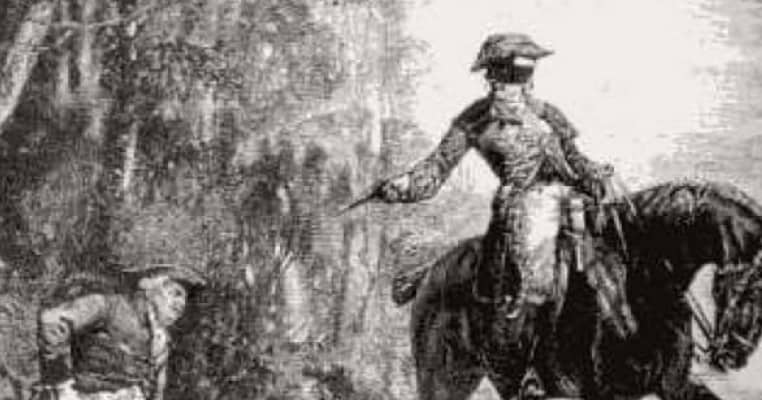Highwaymen were the robbers of the road, audacious mounted thieves who famously waylaid their victims with the cry “stand and deliver.” Most people have heard of famous highway robbers such as the infamous Dick Turpin. However, many other highway robbers remain relatively unknown. These little-known highwaymen- and women spanned many time periods and countries. Their lives, while relatively obscure, were often audacious and violent. They could also be comic- and even sad. Here are sixteen of the strangest, funniest, bloodiest and most tragic tales of lesser-known highway robbers.

16. Mary Frith: aka “Moll Cutpurse”- Who reputedly took up Highway Robbery in her Fifties
Mary Frith or Moll Cutpurse was a thief, crossdresser, and ardent royalist who took to the road in her late fifties to rob: “Roundheads, or rebels, that fomented the Civil War against King Charles I.” Moll turned to a life of crime in her teens when in 1600 she was indicted for stealing 2s 11d. She earned her name ‘cutpurse’ when she moved on to stealing purses from passers-by and was burnt “in the hand” four times for theft. Later in life, Moll fenced stolen goods- and was a madame. Such was Moll’s success from crime; she was able to buy an upmarket townhouse and employ three maids.
When the English Civil War broke out, legend says Moll took to the road to avenge the wrongs done to Charles I- aided by the fact that she already routinely dressed and behaved like a man, drinking, smoking, and fighting. The authorities reputedly arrested her after she robbed the Roundhead General Fairfax of“Two hundred and fifty jacobuses on Hounslow Heath”-but not before she shot Fairfax in the arm and killed two of his servant’s horses. However, Moll escaped the noose by paying a £2000 bribe and completing a stint in Bedlam, which she left in 1644.

